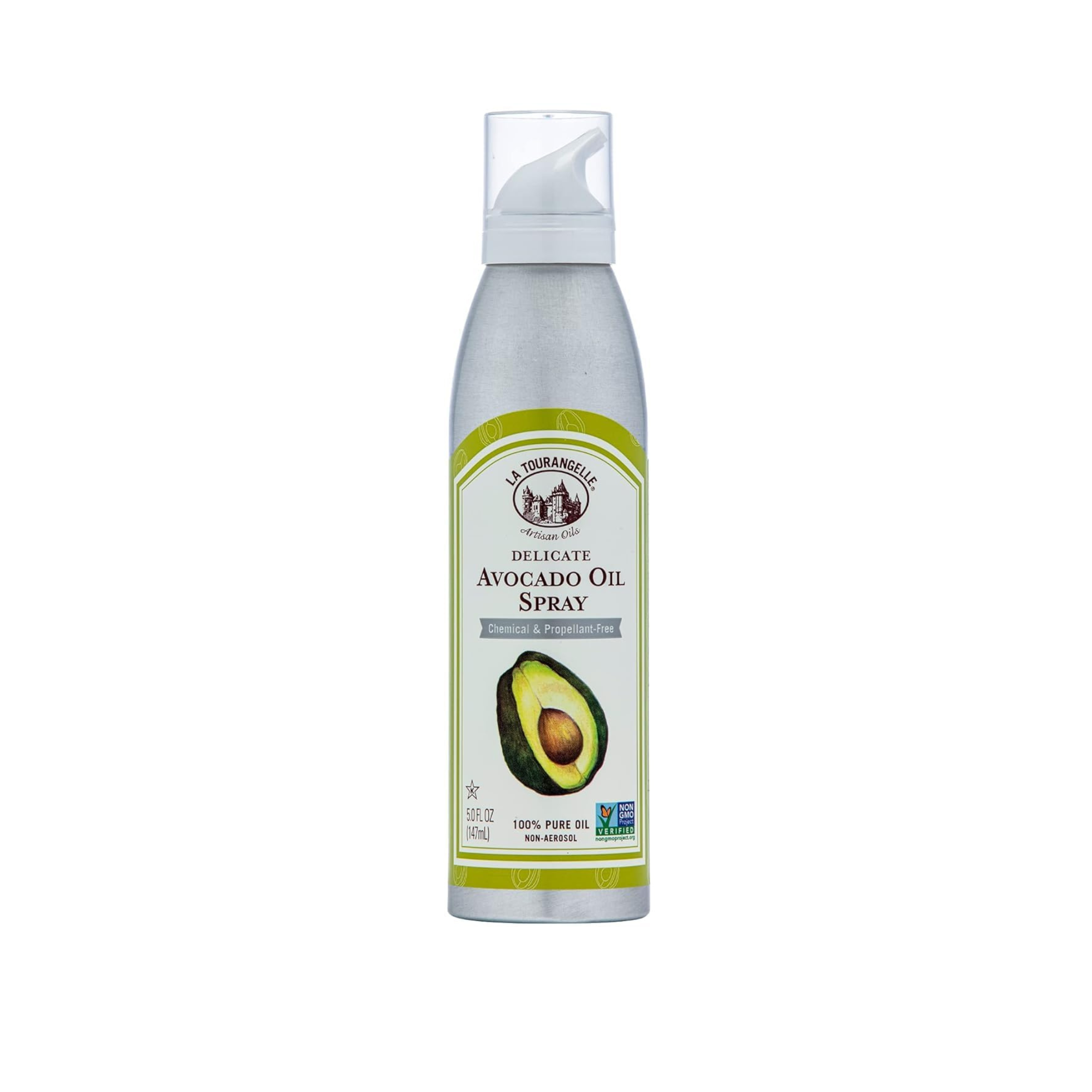Nutritionists reveal their air fryer secrets for healthier cooking in 2025
These are the do's and don'ts: including which healthy oils to use and the ingredients to avoid


If you're interested in eating healthier, you'll likely have considered one of the best air fryers. These modern machines have been praised for using very little oil, creating super crispy vegetables, juicy proteins – and getting delicious food on the table quicker than a takeout order.
Certified nutritionist and dietician, Dr. Peter Brukner, says, 'Small changes in our cooking methods can lead to big improvements in our health. The air fryer is a fantastic tool for enjoying crispy foods without the extra calories.'
However, there are some 'do's and don'ts' you should follow to get the healthiest outcome from your air fryer. I've gathered some golden tips from nutritionists, dieticians, and healthy recipe developers, so you can air fry your way to a healthier New Year.
1. Avoid unrefined oils and light aerosol sprays
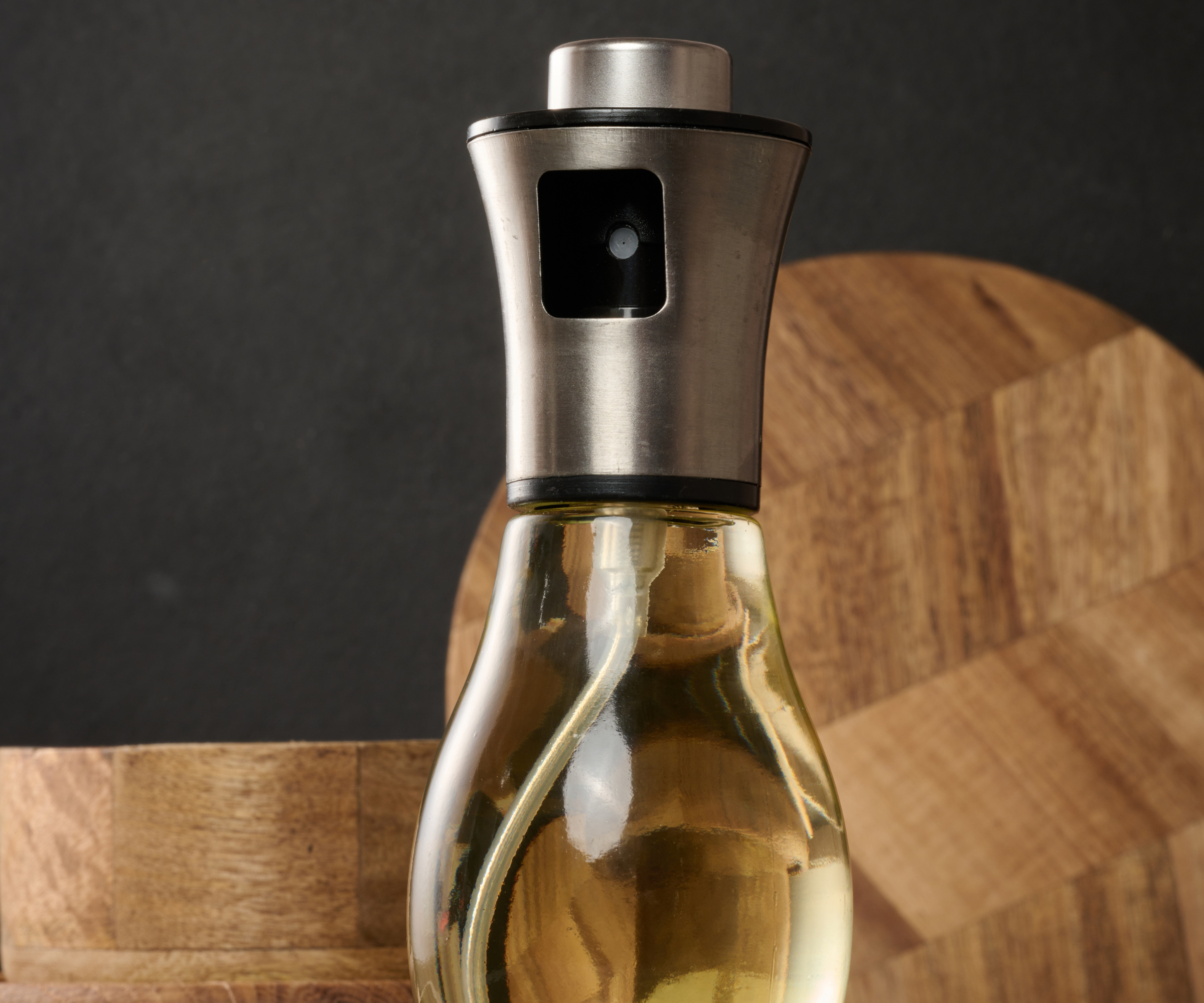
Most air fryer recipes call for a touch of oil to achieve that crispy finish. However, not all oils are considered healthy for air frying. Mackenzie Burgess, registered dietitian nutritionist and recipe developer at Cheerful Choices says, 'Steer clear of unrefined oils like flaxseed or walnut oil for air frying, as they can break down under high heat, losing their health benefits and taste.' Dr. Bunker adds, ‘Oils like corn oil or soybean oil are not good for air frying because they can burn at high temperatures and create unhealthy substances.'
You might be tempted to use 'light' aerosol spray oils, but this is a terrible idea for your health. Air fryer chef and author of the Complete Air Fryer Cookbook Sam Milner, explains that these sprays contain an emulsifier called Lecithin, which 'slowly breaks down the coating on your air fryer' and can cause toxic chemicals to leach into your food.
2. Use avocado, olive or coconut oil instead
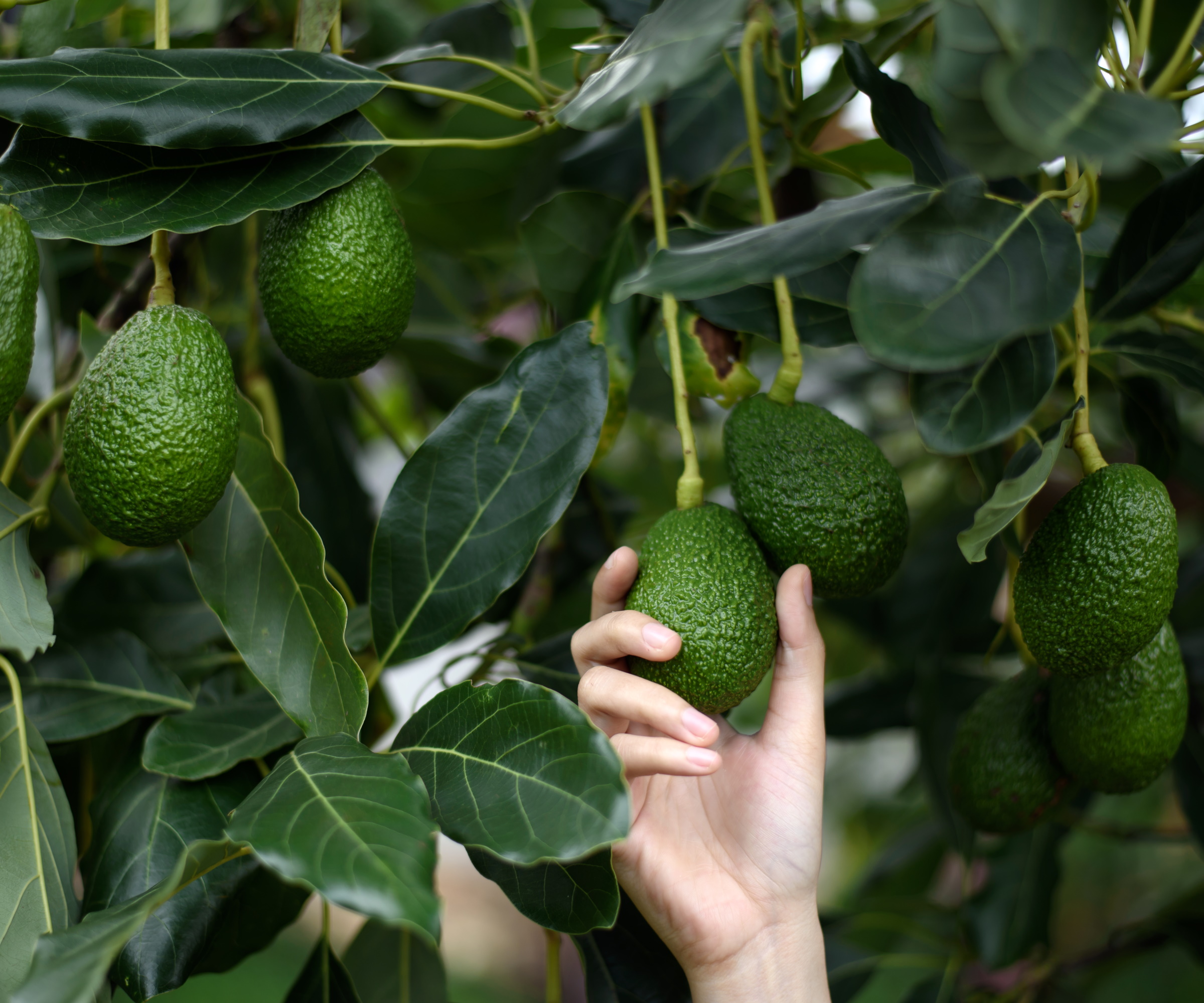
'Avocado oil has a high smoke point of about 520°F (271°C) which makes it ideal for high heat cooking,' says Tracee Yablon-Brenner, registered dietitian nutritionist and trained culinary professional. 'It is a neutral oil, so it is good for veggies, tofu, meat, and poultry, and it contains vitamin E, which is beneficial for heart and skin health.'
Yablon-Brenner also recommends extra virgin olive oil for its 'anti-inflammatory properties.' However, she warns that it has a medium smoke point of 'about 375°F (190°C) so be mindful not to go higher than 375°F when air frying.'
Design expertise in your inbox – from inspiring decorating ideas and beautiful celebrity homes to practical gardening advice and shopping round-ups.
Finally, Yablon-Brenner recommends refined coconut oil – which sounds delicious. She says, 'Coconut oil is rich in medium-chain triglycerides (MCT's) which may help support weight loss and provide energy. It is best to use it on foods which will compliment the coconut flavor such as sweet potatoes, squash, fish and chicken. Coconut oil is higher in saturated fat, so for people who have high cholesterol it should be used minimally.'
3. Meal prep your protein
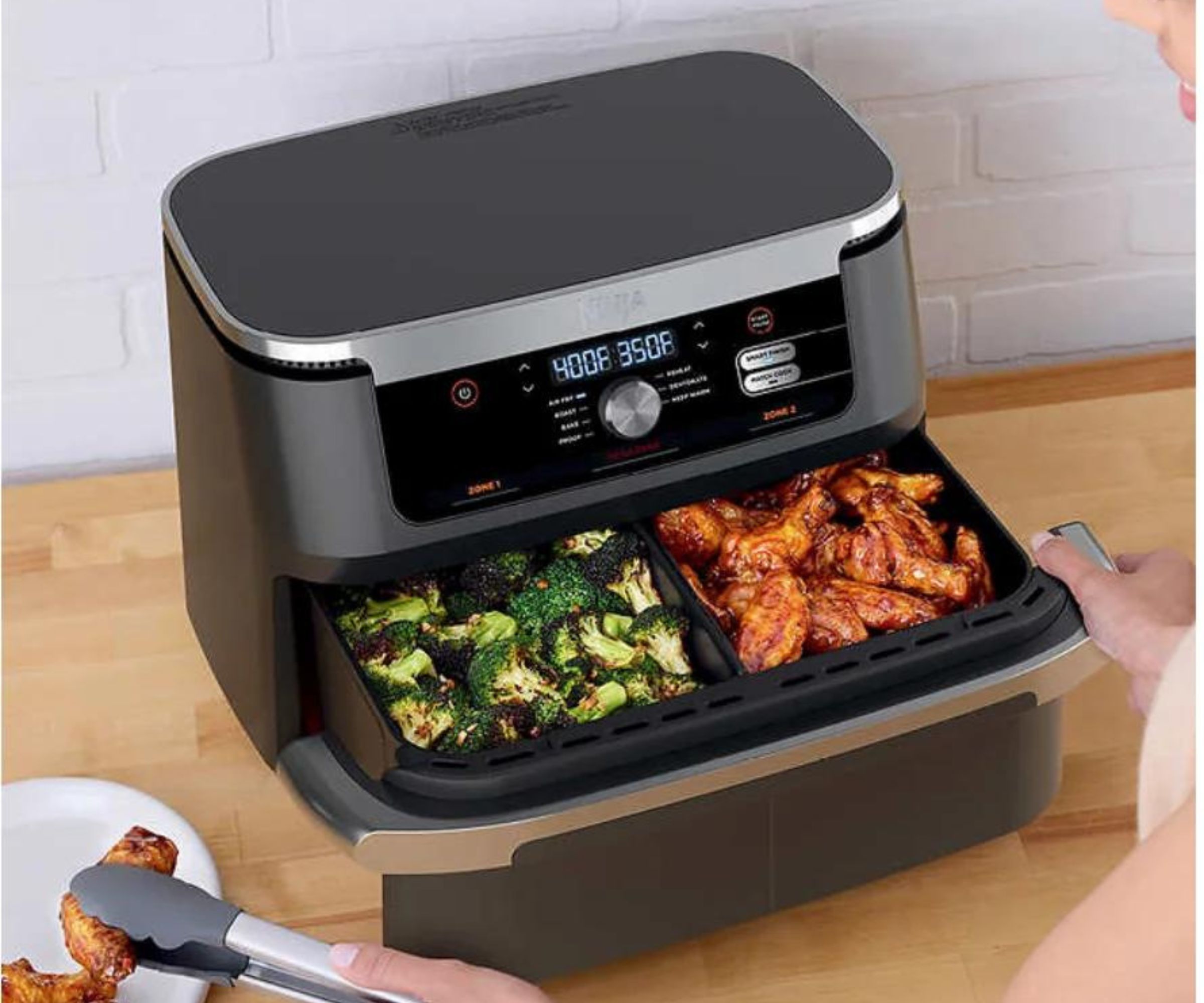
Lindsey Malone, an instructor at Mandel Wellness & Preventive Care Pathway at the School of Medicine, says she uses her air fryer to prepare protein-rich meals for the week.
'Batch cooking chicken for the week is my favorite' says Lindsey. 'Thinly slice a pound of boneless, skinless chicken breast, generously coat with a rub (no added sugars), spray both sides with avocado oil spray, and cook at 400°F for about 8 minutes per side. Check the internal temperature to ensure it reaches 165°F.' You can pair the chicken with broccoli and rice, use it in wraps, or add to salads.
I actually do the same thing with my breakfast, making protein-packed egg bites to eat throughout the week. The air fryer replicates the texture of fluffy, sous-vide eggs, the clean-up is minimal and there's no oil or butter needed. In under 10 minutes, you'll save yourself precious time, energy, and meal planning during the week – and effortlessly hit your daily protein intake.
4. Skip the ultra-processed foods
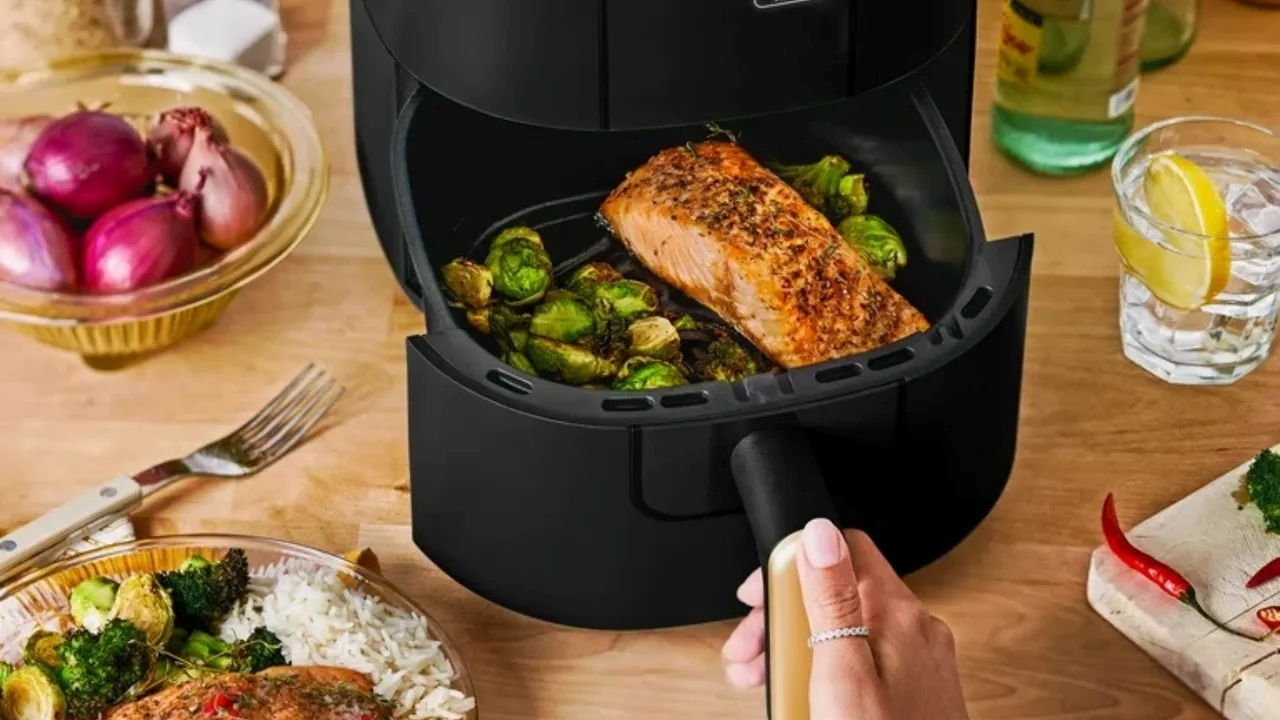
While air fryers are known for delivering crispy-fried textures, all the nutritionists I spoke to warn against ultra-processed foods like mozzarella sticks and chicken nuggets. Dietitian nutritionist, Tracee Yablon-Brenner, explains that these foods often contain unhealthy fats, excess sodium, and preservatives.
Instead, choose lean proteins, like fish, chicken, or turkey breast – as well as plenty of vegetables. You can add tons of flavor with natural spices and sauces. There's plenty of inspiration (including my favorite teriyaki salmon), in this chef's guide to cooking in the air fryer.
5. Go crazy on crispy, wholefood snacks

While it's best to avoid those nuggets and fries, Irene Astaficheva, health coach and founder of the Eated App, says that you can still use the air fryer for quick snacks. She suggests making crispy chickpeas in the air fryer, as 'they’re easy to prepare, satisfying, and packed with protein.' You can try other wholefoods, like nuts and edamame, too.
If you have a sweet tooth, you'll definitely want to check if your air fryer has a dehydrate function. This is brilliant for making healthy sweet snacks, like banana or apple chips with zero added sugar.
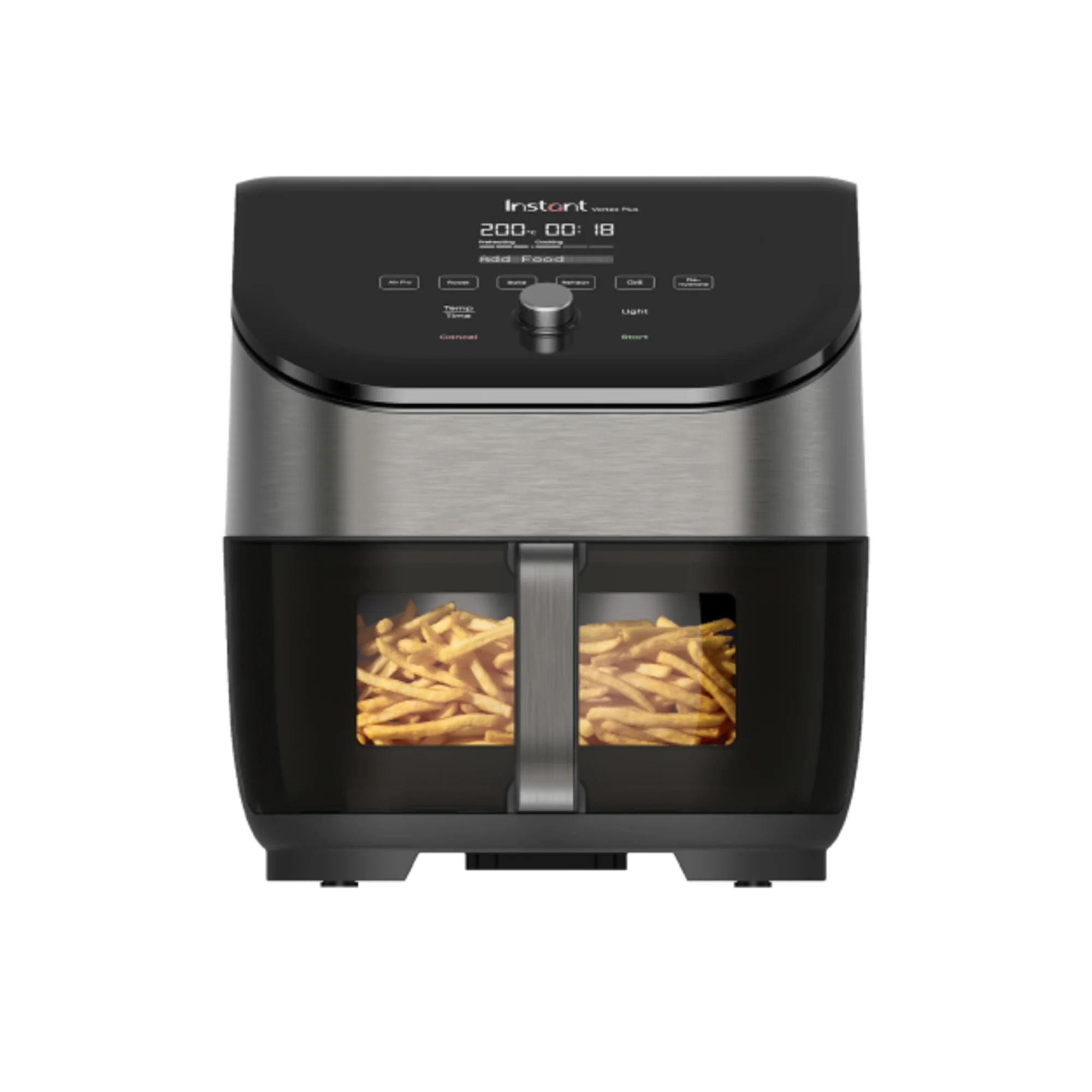
Voted our best air fryer 2025. We highly rate the window, since you can easily check without opening the drawer and your crispy snacks will never get burnt. Plus, there's a great dehydrate function for making fruit chips.
Read more in our Instant Vortex review.
6. Get creative with vegetables

All the nutritionists I spoke to recommend eating a rainbow of vegetables, and this is where the air fryer really excels. Air frying is particularly suited to starchy vegetables, like potatoes, parsnips, and carrots, since it achieves a very crispy exterior and a soft interior. Think: crispy potato wedges or sweet potato chips.
I thoroughly recommend asparagus, cauliflower, mushrooms, tomatoes, and sprouts, too. You just need to coat them lightly in oil and a sprinkle of salt, but you can also add lemon, spices, or herbs for extra flavor.
7. Opt for non-toxic baskets and liners
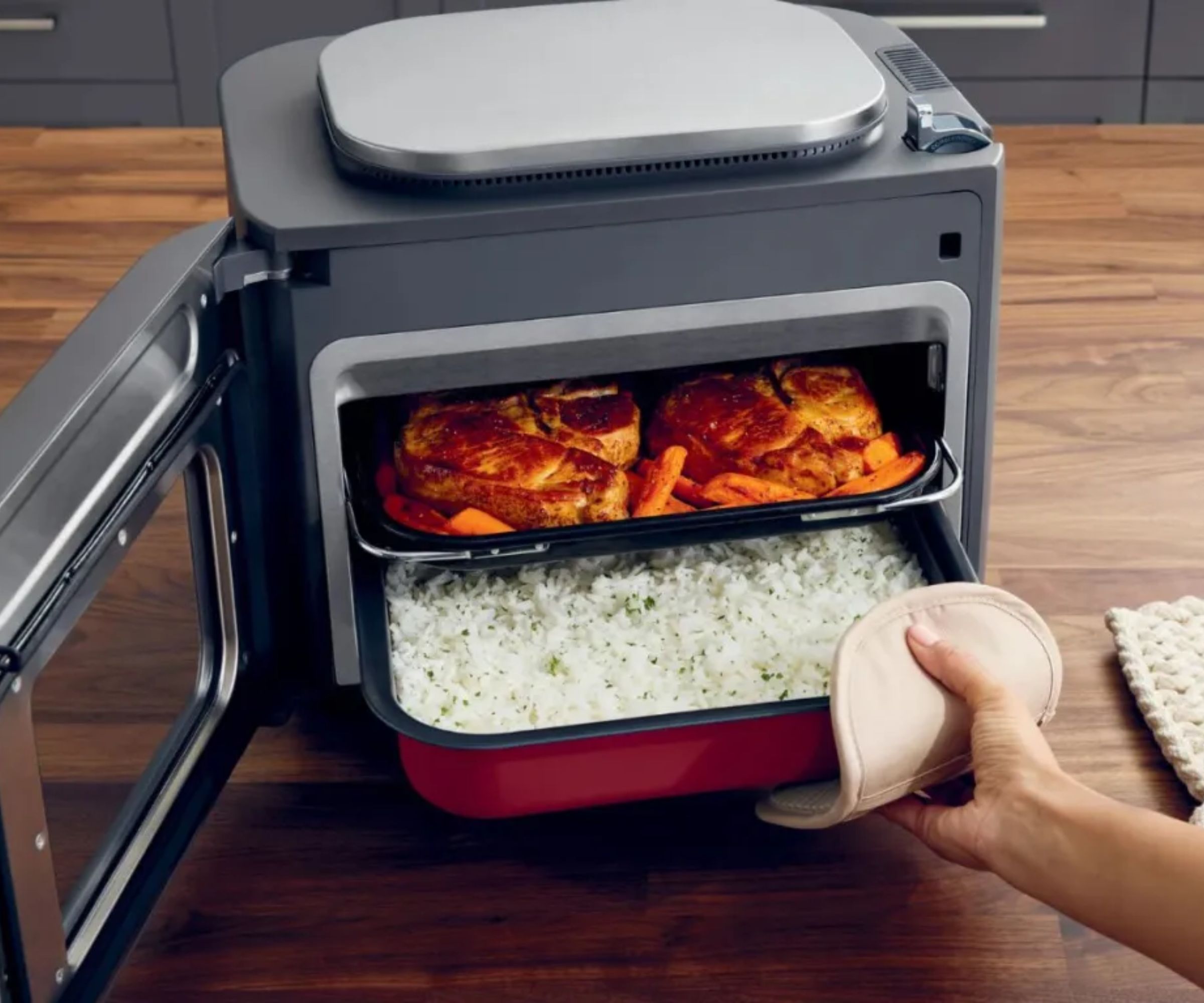
Tracee Yablon-Brenner advises choosing air fryers with non-toxic basket linings to minimize potential health risks. The same goes for the best air fryer liners, which should always be BPA-free and food-safe.
Yablon-Brenner echoes my research into the best non-toxic air fryers, explaining that non-stick baskets can sometimes contain forever chemicals. She explains that these are 'endocrine disruptors that may affect hormones and cause developmental and reproductive health issues. To reduce risks, use air fryers made with ceramic or metal components instead of plastic parts, especially the basket that touches food.'
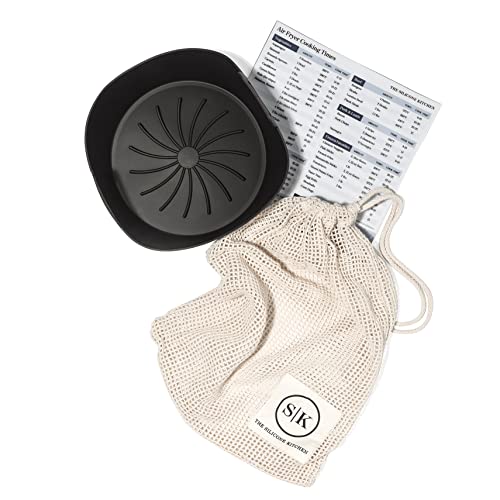
I've recently become a big fan of the Silicone Kitchen Company. Their air fryer liners are made of BPA-free, food-grade silicone. I recommend checking out their muffin cups, too. I use these to air fry egg bites, which are packed with protein for a healthy breakfast.
8. Remember: it's all about balance
Dr. Brukner reminds us that while air frying is a healthier cooking method, it’s not a cure-all. 'Air frying is not a magic fix. To really eat in a healthier way, it’s good to have a balanced diet with many whole foods like fresh fruits, vegetables and whole grains.' In other words, not everything should be air fried. Don't forget the fresh salads, leafy greens, and fruit salsas!
By incorporating these nutritionist air fryer tips, like using avocado oil, meal-prepping that protein, and eating a rainbow of vegetables, you'll be well on your way to maintaining a healthy and delicious diet in 2025.
If you're brand new to air frying and need some more guidance, I've put together a beginner's guide to air frying, here.

Lydia is the Kitchen Appliances Editor for Homes & Gardens, testing everything from air fryers and mixers to juicers and coffee machines. She trained in Culinary Arts at Leiths School of Food & Wine and previously served as the Recipe Editor for Mindful Chef.
